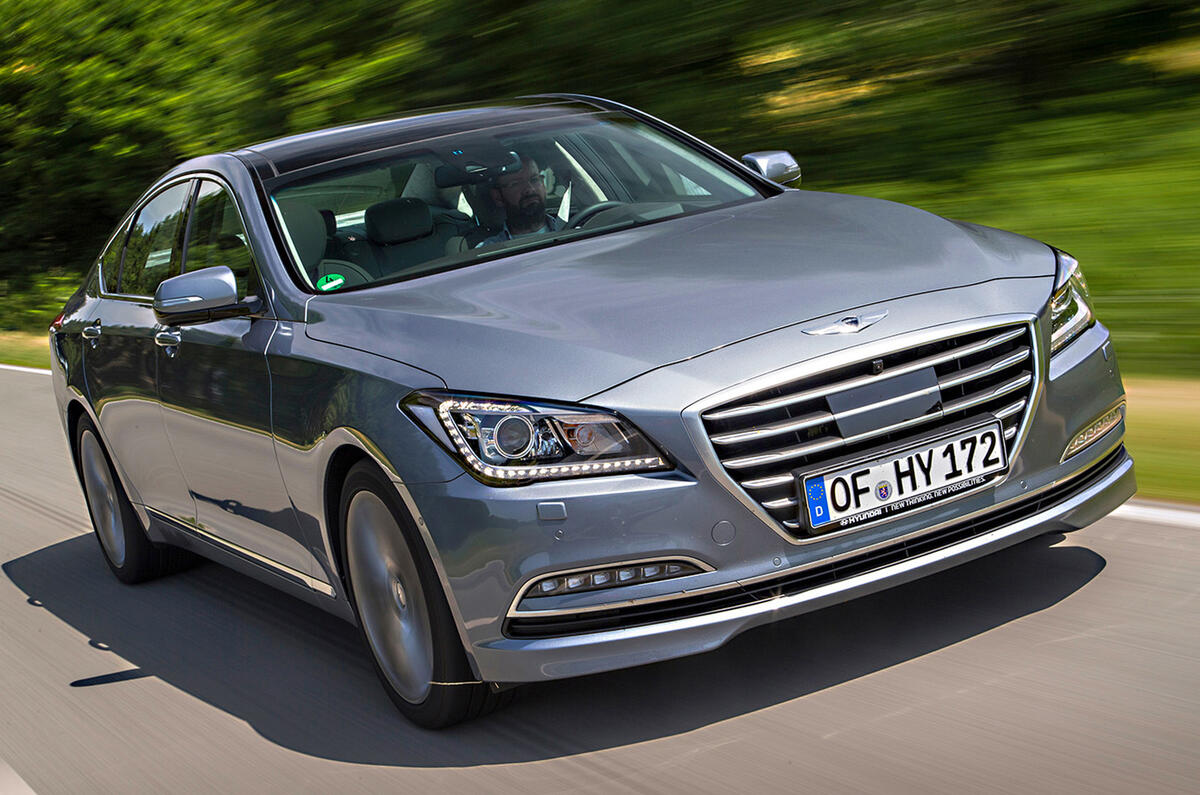Hyundai Genesis 2015-2017 review
- 25
- Oct
If you want one of these 4990mm long, 3.8-litre petrol engined cars in the UK, you will have to visit one of seven specially selected dealers. (If you end up routinely driving a Genesis, we suspect there’s a very good chance you’ll work at one of them.> As it stands there are only six currently offering test drives of the Genesis – Bristol Street Motors Nottingham, East London Hyundai in Romford, Johnsons in Coventry, Edinburgh East’s Macklin Motors, Richmond Hyundai in Guildford and Vantage Hyundai based in Stockport. The Genesis, like the Santa Fe and Mercedes-benz c180 2007 in ghana Veloster, is designed (the company freely admits) for the Far East and the US markets first, and then ‘adapted’ for Europe. So, let’s take a step back to frame the Genesis. Hyunda’s executive car is now in its second generation, although a third generation – the G90 is earmarked.
Lotus has completed much of the legwork for the Euro and UK spec cars, which is encouraging. You might be odd enough to think about an Infiniti, or heck, for less than £50,000 these days you could even buy a Maserati. You’re meant to be similarly unsurprised, too, if your forthcoming Hyundai small family car borrows features from the Genesis, like lane-departure warning, a cabin CO2 monitor that detects when you’re tired (high carbon dioxide levels can make drivers feel sleepy), a system that warns of oncoming traffic when you’re reversing from a parking space, city braking, a head-up display, and so on.
The rooflining, particularly, is pleasingly soft.
Hyundai Genesis 2015-2017 review
<
p> That the showcase for these things is a five-metre saloon with a near four-litre V6 attached is by the by. Sometimes, dynamically, Hyundai doesn’t adapt its cars well enough for Europe, it admits. Not this time, it says.
That the showcase for these things is a five-metre saloon with a near four-litre V6 attached is by the by. Sometimes, dynamically, Hyundai doesn’t adapt its cars well enough for Europe, it admits. Not this time, it says.
Materials are of a higher grade than you’ll find elsewhere in the European Hyundai range, but is it worthy of the sticker price? Different question, and I’d say not quite. But just for a moment, let’s pretend too that you don’t care about carbon dioxide emissions, so a powerful diesel or a small turbo petrol engine are not necessarily for you. The Genesis has one suspension set-up for its traditional markets; then there is another for mainland Europe; and a third for the UK. You could have a Hyundai Genesis. ‘Tough sell’ doesn’t even begin to cover it, does it?
Assume for a moment you’ve got the best part of 50 grand in your pocket (or, more likely, £600 a month), and that you’re looking for an executive car. Nope, owning a saloon with a CO2 figure that’s north of a Ferrari California’s is just dandy. The action of switches is fine: but the look and feel of the plastics isn’t quite up there.
It’s meant to get you used to the idea that a Hyundai can have high levels of interior craftsmanship, so that you don’t have to stifle a giggle when you first spot there’s wood, aluminium and leather on display. Geneses are being specifically tweaked for the UK market, which must rank as a fairly extraordinary outlay given the potential return. You have the choice of the traditional executive players: Mercedes-Benz, Audi, Jaguar, BMW, Lexus or Volvo, or perhaps Land Rover or Porsche if you fancy an SUV.
It’ll reach the UK with a steering wheel on the correct side and is priced from £50,000. The starter button’s nice, though, and if you thumb it this is a quiet motor at idle, becoming pleasingly audible with the gas pedal applied. Hyundai might not be serious about selling vast quantities of the Genesis in Europe, then, but it is utterly serious about what this car stands for. It tells us that this is an interior better than Hyundai has ever before produced.
Hyundai won’t say how many it expects to sell. Fit and finish is very good. This always means the same thing: not very many.
There’s more, too, though, and this bit is important: the Genesis is meant to tell you – and everyone within Hyundai – that chassis dynamics matter.
